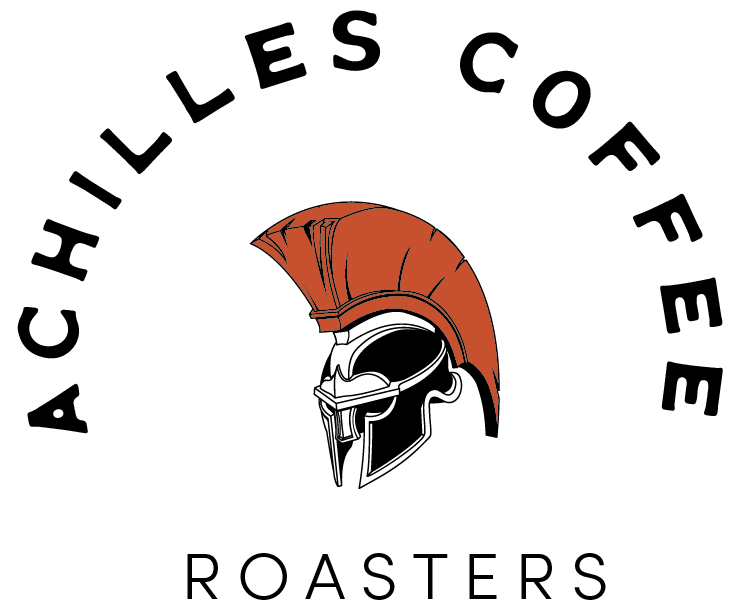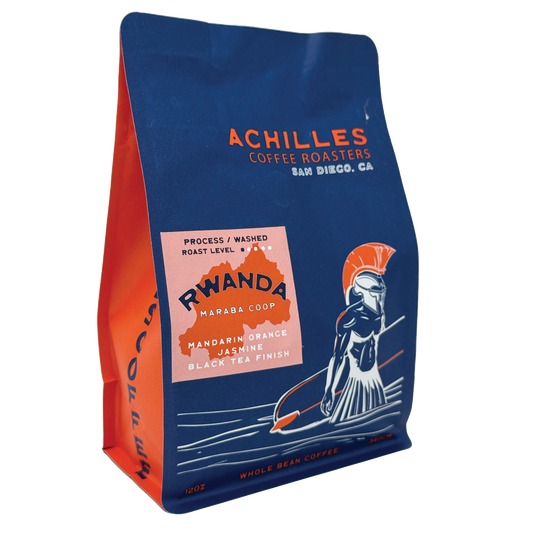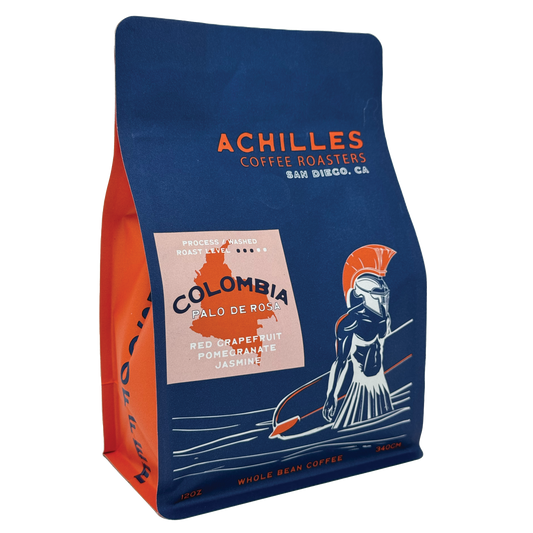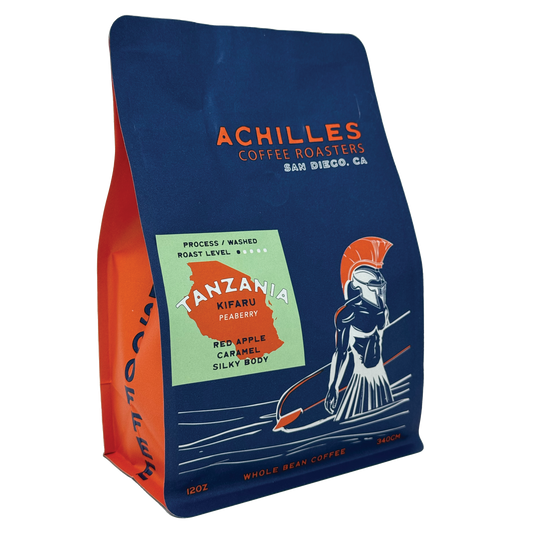When it comes to coffee, flavor isn’t determined solely by where the beans are grown. While the origin, altitude, and processing method all play important roles, one of the most influential factors in the final taste is how the beans are roasted. Roasting transforms raw green coffee into the richly aromatic beans we know and love, and the degree to which they are roasted has a significant impact on the overall flavor profile.
Roast level can influence everything from body and acidity to aroma and the balance of sweetness or bitterness in the cup. Light roasts tend to highlight the unique qualities of the coffee’s origin, such as fruity or floral notes, while darker roasts bring out deeper, toastier flavors like chocolate or spice. Medium roasts often strike a balance between the two, offering both origin character and a rounded, developed sweetness.
Whether you're exploring specialty coffee for the first time or looking to fine-tune your preferences, understanding how roast levels affect your brew is key to discovering what you truly enjoy in a cup.
Light Roast: Bright, Lively, and Complex
Flavor:
Light roasts are celebrated for their ability to showcase the purest expression of a coffee bean’s origin. Because they are roasted for a shorter duration and at lower final temperatures, the beans retain much of their original character—flavors that are deeply influenced by the terroir, varietal, altitude, and processing method. Rather than being masked by caramelized or smoky roast notes, the natural taste of the coffee shines through.
In a well-executed light roast, you’re likely to encounter bright, vibrant acidity—the kind that brings to mind fresh citrus or tart berries—alongside delicate floral aromas and complex fruit-forward flavor profiles. The body is typically lighter and more tea-like, offering a crisp, clean finish that leaves the palate refreshed rather than coated. Because of this transparency and delicacy, light roasts are especially prized in the specialty coffee world for highlighting single-origin beans and their distinct regional qualities.
From the jasmine and bergamot of an Ethiopian heirloom variety to the apple and honey sweetness of a washed Guatemalan, light roasts allow these unique attributes to take center stage. They're an ideal choice for coffee drinkers who enjoy nuance and want to dive deeper into how origin and processing impact the final cup. Brewing methods like pour-over, Chemex, and AeroPress work particularly well with light roasts, as they preserve and emphasize those intricate flavor layers.
In essence, choosing a light roast is a way of tasting the full story of a coffee’s journey—from the soil and climate where it was grown, to the careful hands that processed it, all the way to your cup.
Body:
In terms of mouthfeel, light roasts tend to have a lighter, more delicate body. The texture can be reminiscent of tea—clean and smooth, rather than rich or heavy. This lighter body complements the brighter flavors and makes light roasts especially refreshing and easy to sip, particularly when brewed with slower manual methods.
Bitterness:
Bitterness is minimal in light roasts. Since the beans aren’t roasted long enough to break down natural sugars into bitter compounds, the dominant notes are often sweet, tart, or floral rather than smoky or burnt. The natural balance of acidity and sweetness shines through, giving the coffee a vibrant and lively character.
Best For:
Light roasts are a favorite among coffee drinkers who seek clarity, nuance, and a deeper appreciation for the bean’s origin. They’re especially well-suited for manual brewing methods like pour-over, Chemex, AeroPress, or siphon brewing, which allow you to extract and highlight the coffee’s intricate flavors without overshadowing them with bitterness or heavy body.
Examples of Flavors:
Depending on the bean’s origin, light roasts may reveal a spectrum of delicate flavors such as citrus zest, ripe berries, jasmine blossoms, melon, stone fruits, or raw honey. These vibrant flavor notes make light roasts a captivating choice for coffee enthusiasts who enjoy exploring the more complex side of specialty coffee.
Medium Roast: Balanced, Sweet, and Approachable
Flavor:
Medium roasts strike a pleasing balance between the unique flavors inherent to the coffee bean’s origin and the rich, developed notes that roasting brings out. During this roasting stage, beans are exposed to higher temperatures and longer roast times compared to light roasts, which causes a greater degree of caramelization and Maillard reactions. These chemical changes deepen the coffee’s flavor profile, introducing warmth and sweetness while preserving some of the delicate nuances from the bean’s terroir.
In a medium roast, you’ll typically experience a smooth and well-rounded flavor that combines the best of both worlds: the bright and fruity notes of lighter roasts, and the richer, more robust qualities of darker roasts. The palate often detects comforting flavors like milk chocolate, toffee, caramel, and roasted nuts, which provide a satisfying sweetness and depth. These sweeter, roast-derived tones meld beautifully with gentle hints of red apple, mild citrus, or subtle floral notes, adding layers of complexity without overwhelming brightness or bitterness.
This level of roast also tends to produce a medium body, creating a mouthfeel that’s fuller than a light roast but still approachable and balanced. It offers enough weight to feel substantial in the cup without becoming heavy or oily.
Because of this versatility and balance, medium roasts are some of the most popular and widely enjoyed coffees globally. They are adaptable to a wide variety of brewing methods, including drip coffee makers, pour-over, Aeropress, and even espresso, making them an excellent choice for drinkers seeking both flavor complexity and smooth drinkability.
In summary, medium roasts are perfect for those who appreciate a harmonious cup that blends sweetness, subtle acidity, and richer roast notes—a flavor profile that feels comforting yet nuanced, offering a satisfying and versatile coffee experience.
Body:
Compared to light roasts, medium roasts have a rounder, fuller body with a richer mouthfeel. The increased development of sugars and oils during roasting contributes to a smoother, more satisfying texture. The result is a coffee that feels well-rounded and creamy on the palate without being too heavy.
Bitterness:
While still on the lower end of the bitterness scale, medium roasts begin to introduce gentle bittersweet notes that complement the natural sweetness of the beans. This subtle bitterness often evokes the taste of dark chocolate or lightly toasted nuts, adding structure and complexity without overwhelming the cup.
Best For:
Medium roasts are ideal for coffee lovers who enjoy balance in their cup—enough acidity to keep things bright, enough body to feel substantial, and enough sweetness to create a pleasing overall experience. They’re also highly versatile, working well across a variety of brewing methods including drip coffee makers, Aeropress, French press, and even espresso machines. For this reason, medium roasts are often a go-to option for both home brewers and cafes.
Examples of Flavors:
Depending on the coffee’s origin and processing, medium roasts may display a wide range of inviting flavors like milk chocolate, caramelized sugar, toasted almonds, red apple, golden raisin, and subtle citrus zest. These approachable yet nuanced flavor profiles make medium roasts a perfect middle ground for both casual drinkers and seasoned enthusiasts.
Dark Roast: Bold, Smoky, and Intense
Flavor:
Dark roasts are defined by their bold, intense flavor profiles, where the roasting process itself takes center stage over the coffee’s original characteristics. As the beans are roasted longer and at higher temperatures—often pushing through the second crack—the heat profoundly transforms their chemical makeup. This extended roasting causes the sugars and organic compounds inside the bean to caramelize and carbonize, creating complex, deep flavors that dominate the cup.
In dark roasts, the distinct fruity, floral, or acidic notes commonly found in lighter roasts become muted or almost completely replaced by robust, smoky, and bittersweet flavors. You can expect rich, full-bodied notes of dark chocolate, molasses, toasted nuts, and caramelized sugar. The roast imparts a certain earthiness, sometimes with hints of charred wood, leather, or tobacco, which lend a weighty, grounding quality to the coffee.
This intense roasting process also brings out smoky or slightly charred undertones—flavors that some coffee lovers find deeply satisfying and comforting, while others might consider them overpowering. Occasionally, subtle spicy notes, like clove or cinnamon, emerge, adding further complexity to the dark roast’s profile.
The mouthfeel of a dark roast is usually heavier and more syrupy, often accompanied by a glossy, oily surface on the beans themselves. This thicker body gives dark-roasted coffees a luxurious, almost indulgent texture. Bitterness tends to be more pronounced than in lighter roasts, which balances the sweetness and deep flavors, but it should not dominate the cup.
Dark roasts are particularly well suited for those who prefer a bold, full-flavored coffee with low acidity and a lingering finish. They are a popular choice for espresso preparation, as their intense flavor stands up well to milk in lattes and cappuccinos, cutting through the creaminess to deliver a strong coffee presence. Dark roasts are also favored by fans of French press and other immersion methods that highlight body and richness.
In essence, dark roasts offer a coffee experience that is powerful, rich, and complex, showcasing the artistry of roasting and appealing to those who seek a deeply satisfying, robust cup that carries the unmistakable signature of heat and time.
Body:
The body of a dark roast is typically full and heavy, often with a thick, syrupy or even oily mouthfeel. This richness comes from the breakdown and release of the coffee bean’s natural oils during the extended roasting process. It creates a sensation that lingers on the tongue, delivering a powerful tactile experience that matches the boldness of the flavor.
Bitterness:
Dark roasts are significantly more bitter than their lighter counterparts. As sugars in the beans caramelize—and in some cases begin to carbonize—bitterness increases. This is not necessarily unpleasant; for many coffee drinkers, this roasty bitterness is what makes a dark roast satisfying. It can be reminiscent of dark chocolate, burnt sugar, or well-done toast, adding depth and intensity that stands up well to milk or sugar.
Best For:
Dark roasts are a favorite for those who prefer a low-acid, bold cup of coffee with minimal fruitiness or brightness. They perform exceptionally well in full-immersion brewing methods like French press, as well as in espresso, where their richness and lower acidity help create a strong, crema-topped shot. They’re also great for brewing methods where the coffee needs to cut through milk, such as in lattes and cappuccinos.
Examples of Flavors:
Common dark roast flavor notes include dark cocoa, molasses, toasted or smoked wood, black pepper, licorice, and charred nuts. While origin flavors are less pronounced, a well-crafted dark roast can still exhibit complexity beneath its bold surface, especially when made from high-quality beans.
When it comes to coffee, personal preference is everything. There’s no universally “best” roast—only the one that aligns with your taste, brewing style, and how you like to enjoy your cup. Understanding what each roast level offers can help you navigate the wide world of coffee more confidently.
Love bright, fruity, or floral coffees?
If you're drawn to vibrant flavors like citrus, berries, or jasmine, light roasts are likely your best match. These coffees preserve the unique characteristics of the bean’s origin, allowing you to taste where it came from—be it an Ethiopian highland or a washed Colombian. Perfect for slow, manual brewing methods like pour-over, light roasts deliver a nuanced, complex experience.
Prefer balance and versatility?
Medium roasts are crowd-pleasers for a reason. They offer a harmonious blend of origin flavors and roast-developed notes. You might taste caramel, nuts, chocolate, and hints of fruit—all in one cup. With a smooth, rounded body and low bitterness, medium roasts are incredibly adaptable and work well in everything from your drip machine to an Aeropress or espresso shot.
Crave bold, smoky depth and lower acidity?
Dark roasts are your go-to. These beans have undergone a longer roast process, resulting in rich, full-bodied brews with notes of cocoa, molasses, and toasted nuts. The acidity is much lower, and the flavor is stronger—ideal for those who take their coffee black or with milk. If you enjoy French press, moka pot, or espresso, dark roasts will hold their own with confidence.
Still unsure? Try a side-by-side tasting
One of the best ways to discover your preferences is to try the same coffee origin at different roast levels. A light-roasted Colombian might showcase red apple and floral notes, while the medium version leans more toward milk chocolate and almond, and the dark roast delivers bold cocoa and smoky depth. Tasting them side by side helps highlight how roasting transforms a single bean into dramatically different flavor profiles.
Ultimately, the best roast is the one that makes you reach for a second cup.
Don’t be afraid to experiment. Your palate may evolve over time, or you may find that you enjoy different roasts for different moods or brewing methods. The journey to finding your favorite cup is all part of the fun.
Final Thoughts
Roast level is more than just a color—it's a powerful lens through which your entire coffee experience is shaped.
From the moment green coffee beans hit the roaster, their chemical composition begins to change. Heat transforms sugars, acids, and aromatic compounds in ways that dramatically affect the final cup. Whether you're savoring a delicate pour-over or pulling a bold espresso shot, the roast level plays a central role in determining what you taste, how the coffee feels on your palate, and even how it pairs with food or milk.
By understanding the basics of light, medium, and dark roasts, you're no longer choosing coffee blindly—you’re curating your experience.
A light roast might offer the tart brightness of grapefruit or the floral elegance of jasmine, while a medium roast could greet you with the warm familiarity of caramel and chocolate. A dark roast, on the other hand, delivers boldness and body, with comforting notes like molasses or toasted spices. Each has its own story to tell, and the better you understand those differences, the more intentional and satisfying your choices become.
Learning how roast impacts flavor, body, and bitterness empowers you to explore coffee more deeply and find what truly resonates with your taste.
You may discover you prefer a bright, fruit-forward cup in the morning and something smoother or bolder in the afternoon. Or you might come to appreciate how roast level interacts with different brewing methods—light roasts in a Chemex, medium in an Aeropress, dark in a French press.
At its best, coffee is a personal, evolving journey—and roast is your compass.
By getting to know how roast level shapes what’s in your cup, you open the door to a richer, more enjoyable coffee routine. So whether you're refining your palate or simply trying to make better decisions at your favorite café or online store, this knowledge gives you the confidence to brew better, buy smarter, and ultimately enjoy coffee on your own terms.








